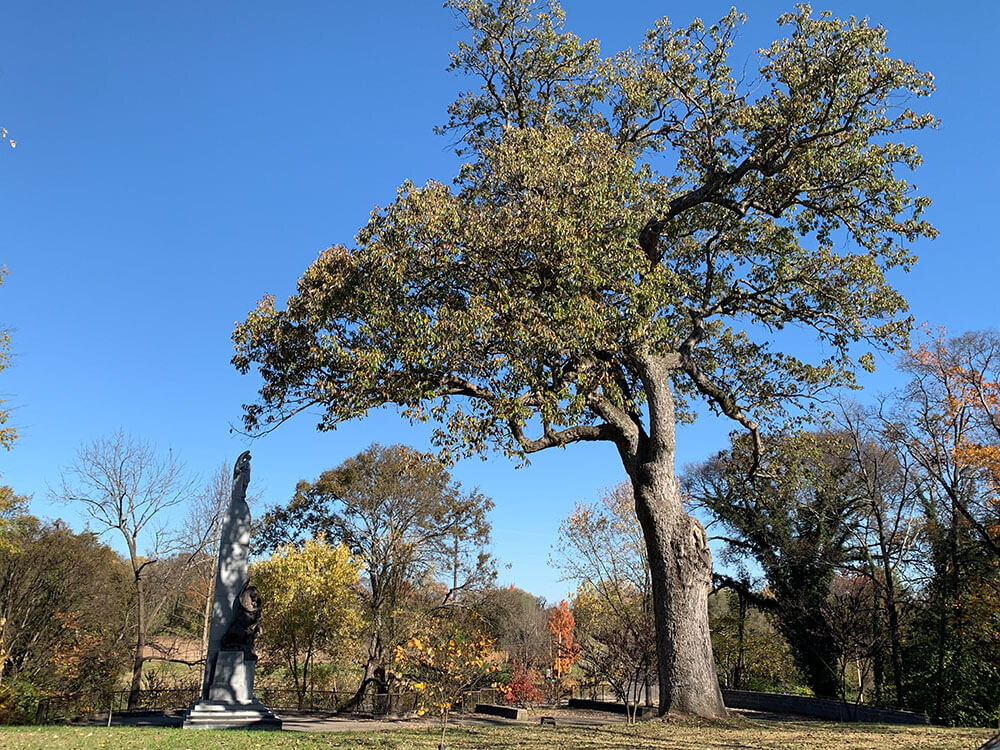The Historic & Specimen Trees Program
What Are Heritage Trees?
Since a tree can live for decades or even centuries, it can become a familiar and beloved part of a neighborhood and a silent witness to a city’s history. Many trees in Nashville have been around for a hundred years or more, and community support for protection of these beautiful, long-lived trees led to the creation of the Historic & Specimen Trees Program.
A historic oak tree that stood witness to the Civil War towers over the Battle of Nashville Monument.
Started in 2016, the program registers trees on private property across Davidson County as historic or exemplary of their species, providing a layer of protection over the life of the tree. A tree can be nominated for inclusion in the program by the owner or a neighbor (with the owner’s permission) based on one of three requirements:
Exceptional size and age
Recognition as a significant feature of a community
50+ years old and a memorial or witness to a significant individual, group, event or cause
How A Tree Gets Nominated
To nominate a tree, residents send in an application and photos to the Historic & Specimen Trees Program. Then members of the Metro Tree Advisory Committee go out to look at the tree. Since Nashville’s Historic & Specimen Trees Program is still rather new, fewer than 100 trees have been registered so far. Jennifer Smith, a horticulturist with Metro Public Works, says it will take time to register hundreds of trees, as other foundations have done after many years of work. Although many people wanted a program to protect trees in the Metro area, Jennifer says more widespread acceptance of good tree-care behaviors will be achieved over time: “Through education, you start getting people to understand the value of trees, which leads to better care practices.”
Jennifer described the different trees that are on the registry from across Nashville’s private backyards. One very large oak in the Nashville area is believed to be over 300 years old, which would have provided early residents with acorns to eat before Nashville was even close to becoming the “It” city. Another oak in the program was witness to the Civil War, where during the Battle of Nashville, soldiers would have camped out under it for protection. Other important species represented in the Historic & Specimen Trees roster include Maple, Ginkgo and Black Cherry Trees. When people feel an association with a tree, they may care enough to make an effort to preserve and bring recognition to it.
Why Should They Be Protected?
Heritage trees are mature, healthy specimens, which are important features of a resilient forest canopy, from the soil stability that roots provide, to the temperature control and air filtration the leaves perform, to the habitat trees provide for animals both above and under the ground. These same benefits occur in urban and suburban areas, although they are often not prioritized in development.
The Historic & Specimen Trees Program requires that a protected tree must receive clearance by a vote of the Metro Council to be removed. The educational work that the Metro Tree Advisory Committee does to educate the community and developers on how to best maintain trees in residential or commercial areas of the county helps trees get saved when they can, and allows appropriate removal when necessary. Jennifer notes that groups like the Nashville Tree Conservation Corps can help spread out the work and nurture opportunities for the community to participate in canopy care.

